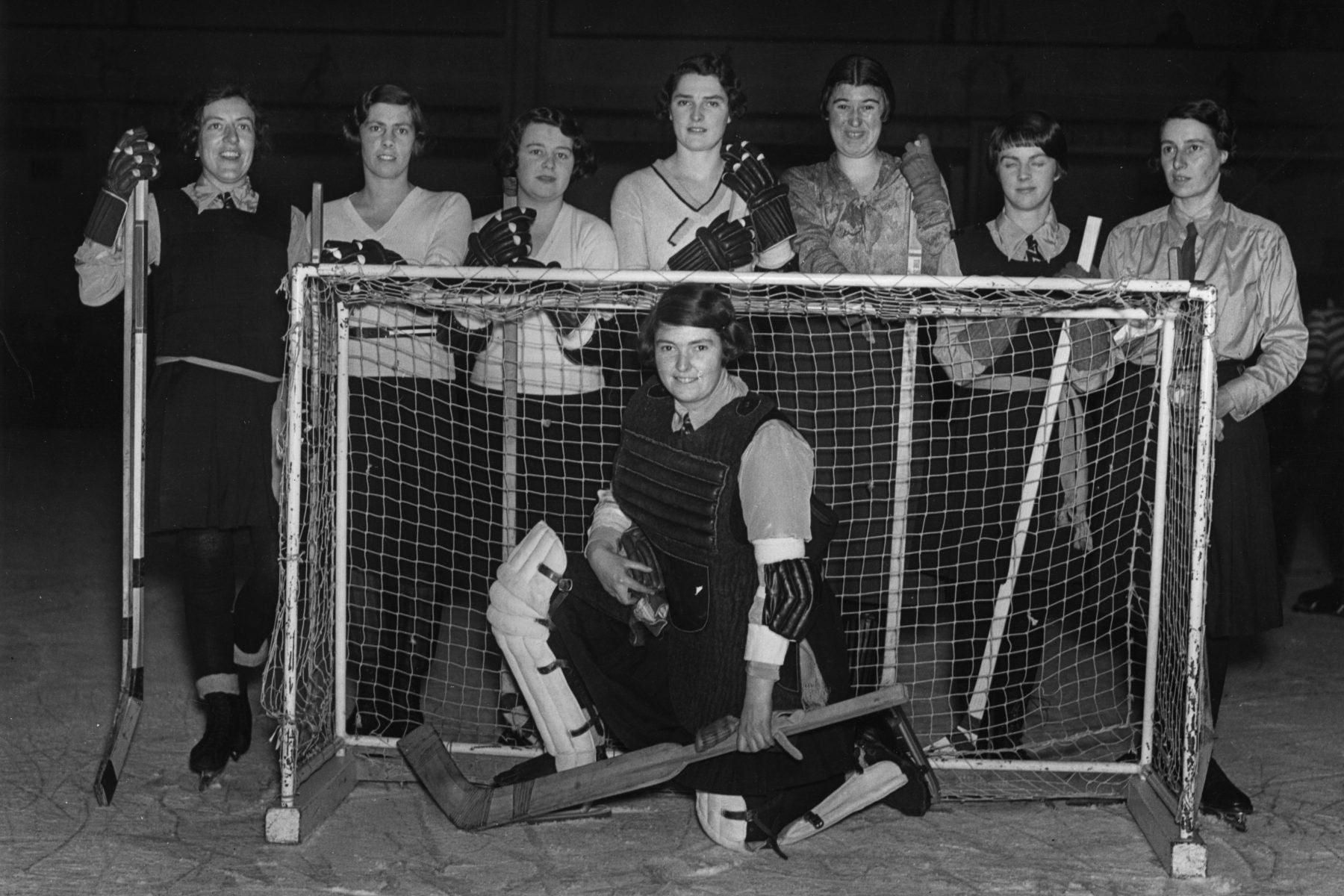With its reputation for aggressive play punctuated by violent fights, ice hockey looks to many modern eyes like a distinctly masculine sport. But, as the historian Andrew C. Holman writes in the Journal of Sport History, when it first caught on in the U.S., it was popular with women as well.
Ice hockey came to the U.S. from Canada at the end of the nineteenth century. Immediately, some women started playing. Holman found surviving photographs of female players, including women’s teams in Philadelphia and student athletes at Mount Holyoke College. But women’s hockey really got serious in the years during and after World War I.
The rise of the sport came at a time when women were increasingly attending college, joining professions, and taking on wage work. With this came the controversial ideal of the “strenuous woman,” who should be strong and capable, rather than meek and frail like a model Victorian lady.
Starting in 1916, Holman writes, women’s ice hockey teams popped up at many colleges and as amateur clubs off campus. By 1917, New York and Boston sported women’s ice hockey teams, who traveled to compete against each other and played against other women’s teams in their own cities.
In 1920, the Boston Globe was enthused that fans “will have the pleasure of seeing a team of rosy cheeked, fluffy haired girls in a hockey team… The leader of this group of girls weighs only 115 pounds and is only 5 feet 2 inches tall. She has grit, however, and the muscle, for she says, she is as strong as many men who weighs [sic] twice as much as she.”
Also in 1920, Boston’s Back Bay Hockey Club began developing a plan for a formal intercity league, which would include teams from Philadelphia and Pittsburgh. But the league never actually happened. In fact, by the middle of the decade, women’s ice hockey had begun to decline.
Holman writes that this decline was partly the result of the sport’s vulnerability to commercial forces. Given the expense of keeping a skating arena open, amateur clubs could only function if they made money for arena owners and hockey promoters. But those commercial interests, as well as sports writers and other leaders of the sports establishment, soon settled on a single vision for promoting hockey to the public: a distinctly male one, featuring “bloodshed and mayhem” alongside skill and strategy.
Weekly Newsletter
At the same time (in the early 1920s), the pendulum on women’s behavior began swinging the other way, with the emerging argument that competitive sports threatened women and girls’ morals. In 1923, the Women’s Division of the National Amateur Athletic Federation adopted an “Athletic Creed” encouraging “play for play’s sake” and decrying female athletes’ “exploitation” in spectator sports or for commercial purposes.
As college and amateur athletic promoters drew back from supporting women’s ice hockey, and as commercial interests determined that women’s games couldn’t produce enough profits, the sport foundered. Today, female players still struggle to get the respect and support that their counterparts sought a century ago.







